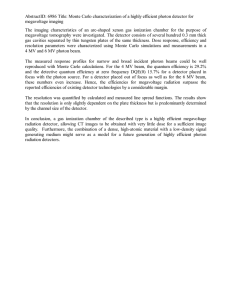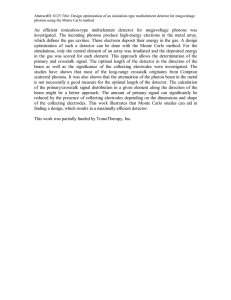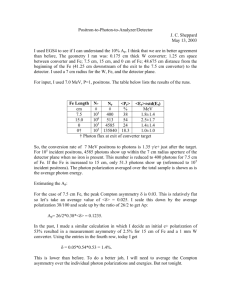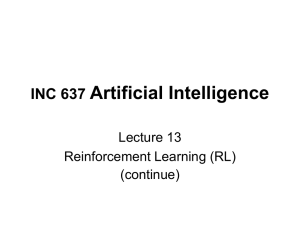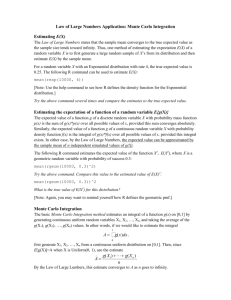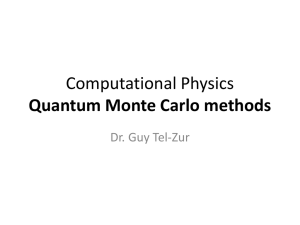Alina Gainusa Bogdan & Emmanuel Boss
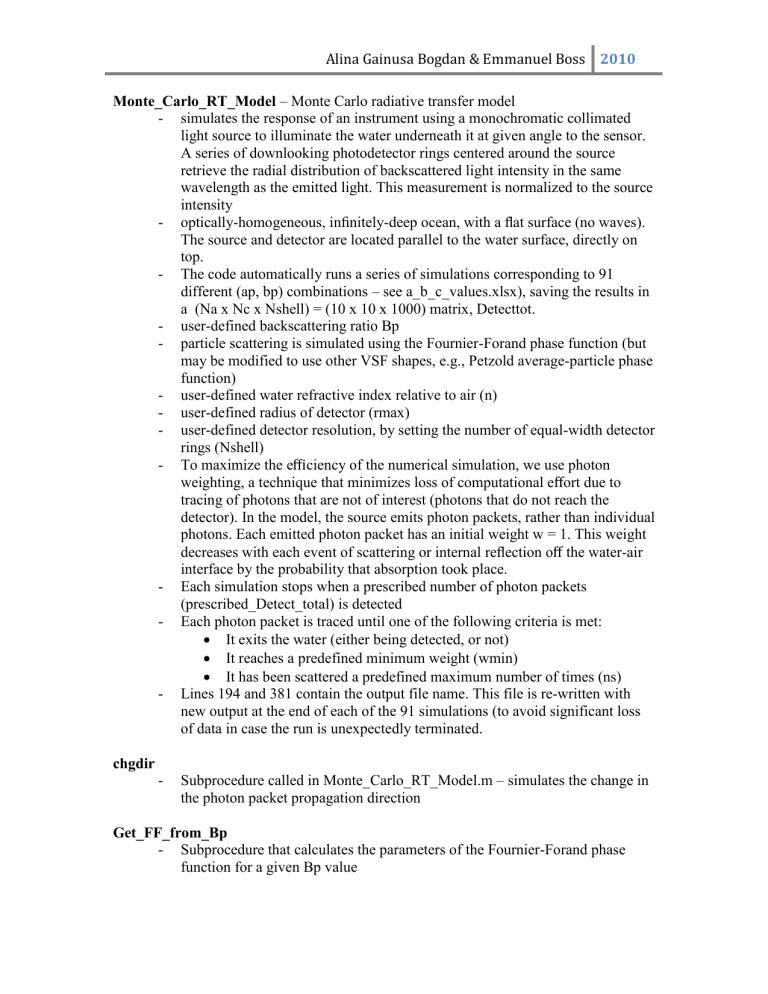
Alina Gainusa Bogdan & Emmanuel Boss 2010
Monte_Carlo_RT_Model – Monte Carlo radiative transfer model
simulates the response of an instrument using a monochromatic collimated light source to illuminate the water underneath it at given angle to the sensor.
A series of downlooking photodetector rings centered around the source retrieve the radial distribution of backscattered light intensity in the same wavelength as the emitted light. This measurement is normalized to the source intensity
optically-homogeneous, infinitely-deep ocean, with a flat surface (no waves).
The source and detector are located parallel to the water surface, directly on top.
The code automatically runs a series of simulations corresponding to 91 different (ap, bp) combinations – see a_b_c_values.xlsx), saving the results in a (Na x Nc x Nshell) = (10 x 10 x 1000) matrix, Detecttot.
user-defined backscattering ratio Bp
particle scattering is simulated using the Fournier-Forand phase function (but may be modified to use other VSF shapes, e.g., Petzold average-particle phase function)
user-defined water refractive index relative to air (n)
user-defined radius of detector (rmax)
user-defined detector resolution, by setting the number of equal-width detector rings (Nshell)
To maximize the e ffi ciency of the numerical simulation, we use photon weighting, a technique that minimizes loss of computational e ff ort due to tracing of photons that are not of interest (photons that do not reach the detector). In the model, the source emits photon packets, rather than individual photons. Each emitted photon packet has an initial weight w = 1. This weight decreases with each event of scattering or internal reflection o ff the water-air interface by the probability that absorption took place.
Each simulation stops when a prescribed number of photon packets
(prescribed_Detect_total) is detected
Each photon packet is traced until one of the following criteria is met:
It exits the water (either being detected, or not)
It reaches a predefined minimum weight (wmin)
It has been scattered a predefined maximum number of times (ns)
Lines 194 and 381 contain the output file name. This file is re-written with new output at the end of each of the 91 simulations (to avoid significant loss of data in case the run is unexpectedly terminated. chgdir
Subprocedure called in Monte_Carlo_RT_Model.m – simulates the change in the photon packet propagation direction
Get_FF_from_Bp
Subprocedure that calculates the parameters of the Fournier-Forand phase function for a given Bp value
Alina Gainusa Bogdan & Emmanuel Boss 2010
Get_a_c_values
Procedure that defines the forcing IOP values used in every
Monte_Carlo_RT_Model run
Inversion_algorithm
function that performs the data analysis on the results of an individual simulation and uses the inversion algorithm to estimate bb and a.
from a Monte_Carlo_RT_Model output file, use with Detecttot(i a
,i c
,:)
Data_analysis
Procedure that investigates the results of several model runs for an instrument located on the water surface, with the light beam perpendicular on the plane of the detector (see table below for a list of the runs and corresponding Bp values)
This analysis was used to create the inversion algorithm and analyze the inversion error distribution
Run name exp46
Bp
0.025 exp26 exp28 exp29 exp36 exp47 exp31 exp33 exp35 exp38 exp39 exp45 exp30 exp32 exp34
0.02
0.02
0.02
0.02
0.015
0.01
0.01
0.01
0.01
0.01
0.01
0.005
0.005
0.005 exp40 0.005
Geometry_analysis, Energy_analysis
Data processing schemes used to extract the relevant inversion for the inversion algorithm from the detected signal
